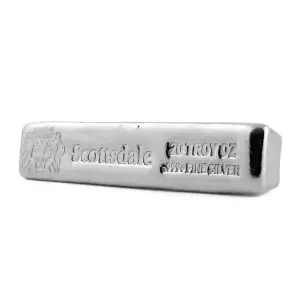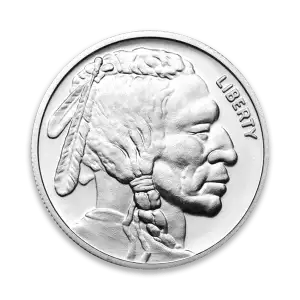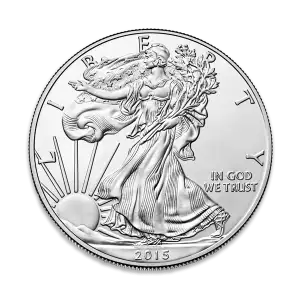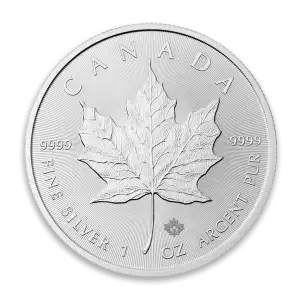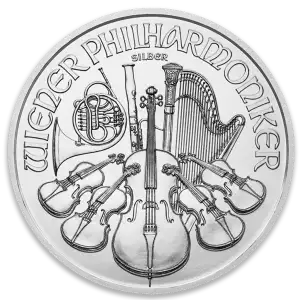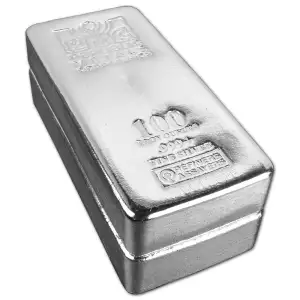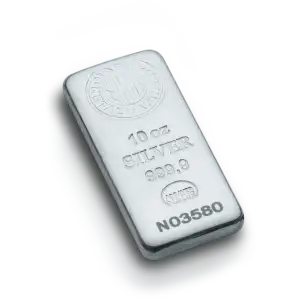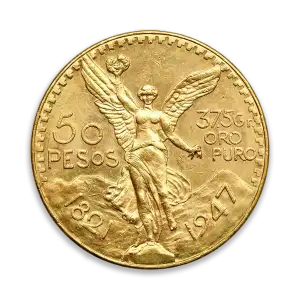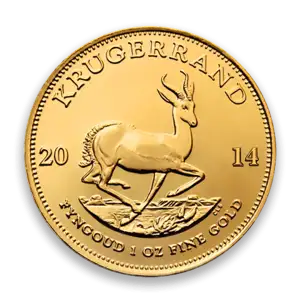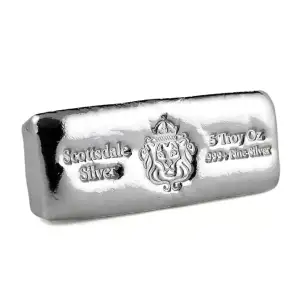If you’ve ever held a coin and noticed a tiny letter near the date, you’ve already encountered something that could significantly impact its value: a mint mark. Mint marks are letters stamped on coins to indicate the minting facility where the coin was produced. But what do mint marks mean – and why do coin collectors pay so much attention to them?
Whether you’re new to coin collecting or just wondering if that old coin in your drawer might be worth something, understanding mint marks is a crucial first step. The mint mark first appeared on U.S. coins in the early 19th century, with early branches in Charlotte and Dahlonega playing a significant role in the history and identification of American coins. Mint marks were introduced not only to identify the minting facility but also to hold the maker responsible for the quality and authenticity of the coins. An act established mint marks as a way to standardize coin identification and accountability across different mint facilities.
What Is a Mint Mark?
A mint mark is a small letter stamped on a coin that identifies the U.S. Mint facility where the coin was produced. Mint marks help identify where a coin was produced, providing important information about its origin. In the earliest years, so identifying the origin of coins was more challenging, especially since the Philadelphia Mint did not use mint marks at first. These marks help collectors, historians, and dealers track the origin of coins—and in many cases, determine their rarity and value.
U.S. Mint Mark Abbreviations:
- P – Philadelphia
- D – Denver
- S – San Francisco
- W – West Point
- (Historical marks also include “CC” for Carson City and “O” for New Orleans)
Note: Other important historical mint branches include the branches in Charlotte (“C”) and Dahlonega (“D”), as well as New Orleans (“O”). The establishment of mint branches in Charlotte and Dahlonega was significant for early U.S. coin production, as these mint branches in Charlotte and Dahlonega produced coins with unique mint marks that help identify their origin and ensure authenticity.
Many early coins, particularly gold coins produced at the Charlotte and Dahlonega mints, are highly prized by collectors for their rarity and historical significance.
Mint marks were first used in the United States in the 1830s and have been part of coinage history ever since.
History of the United States Mint
The story of the United States Mint begins in 1792, when the first official mint was established in Philadelphia. As the nation’s original mint, the Philadelphia Mint played a crucial role in producing coins for the young country, setting the standard for American coinage. Over the centuries, the United States Mint has evolved, introducing new coin designs, experimenting with different metals, and adopting advanced minting techniques to keep up with the times.
A pivotal moment in the mint’s history came with the Coinage Act of 1835. This important legislation required that all coins produced at branch mints be marked with a distinctive letter or symbol—what we now know as a mint mark. The purpose was to identify the specific mint where each coin was struck, making it easier to track quality, authenticity, and origin. Since then, mint marks have become an essential part of U.S. coinage, helping collectors and historians trace the journey of coins from the Philadelphia Mint, Denver Mint, San Francisco Mint, and West Point Mint, among others.
Today, the United States Mint continues to innovate, producing coins and medals that reflect the nation’s heritage and values. Whether it’s a commemorative release or a circulating coin, the presence of a mint mark connects each piece to a rich tradition that began over two centuries ago.
Where to Find Mint Marks on Coins
Mint mark locations vary depending on the coin’s type and the year it was minted. Here’s a quick guide:
- Lincoln Cents: Below the date on the obverse (front).
- Jefferson Nickels: To the right of Monticello on the reverse (older coins), or below the date on the obverse (newer coins).
- Roosevelt Dimes: To the left of the torch on the reverse (older coins), or above the date on the obverse (newer coins).
- Washington Quarters: To the right of the ribbon on Washington’s hair (older coins), or below the motto “IN GOD WE TRUST” on the obverse (newer coins).
- Kennedy Half Dollars: Below the eagle’s claw on the reverse (older coins), or above the date on the obverse (newer coins).
Mint marks are applied to the coin dies during the manufacturing process, ensuring each coin's origin can be traced and helping to verify authenticity.
Tip: Early coins with rare mint marks can be especially valuable—always check for these, as a coin's mint mark can significantly impact its value and desirability among collectors.
Common U.S. Coins and Mint Mark Locations:
- Lincoln Cent (1909–present) – Under the date on the obverse (front).
- Jefferson Nickel (1938–present) – Right of Monticello on the reverse (pre-1965); to the right of the portrait (post-1968).
- Roosevelt Dime – On the obverse, to the left of the torch.
- Washington Quarter – On the obverse (pre-1999) or near Washington’s ponytail (post-1999).
- Morgan Dollar (1878–1921) – Below the eagle’s tail feathers on the reverse.
- Half Dollar – On the reverse below the eagle (pre-1964), or on the obverse above the date (Kennedy half dollars, post-1964).
Tip: If there’s no mint mark, the coin likely came from the Philadelphia Mint (especially for coins before the 1980s).
Tip: Circulated coins can sometimes include early coins with rare mint marks. Finding these early coins in your everyday change can be a valuable discovery for collectors, as some are highly prized for their historical significance and rarity.
Major U.S. Mints and Their Marks
The United States is home to four major operating mints, each with its own unique mint mark that tells a story of American history and craftsmanship. The Philadelphia Mint, the nation’s oldest, is identified by the “P” mint mark and has been a cornerstone of U.S. coin production since 1792. The Denver Mint, established in 1862, uses the “D” mint mark and is renowned for producing a vast number of circulating coins.
The San Francisco Mint, founded in 1854 during the height of the California Gold Rush, is known for its “S” mint mark and its legacy of producing both circulating and proof coins. The West Point Mint, which began as a bullion depository in 1938, now carries the prestigious “W” mint mark and is famous for its high-quality commemorative and precious metal coins.
In addition to these four, several historical mints have left their mark on American coinage. The Charlotte Mint (“C”), Dahlonega Mint (“D”), and New Orleans Mint (“O”) each played a significant role in the 19th century, producing coins that are now highly sought after by collectors. The New Orleans Mint, in particular, is remembered for its “O” mint mark, which appears on many classic U.S. coins.
Each mint mark serves as a fingerprint, allowing collectors to trace a coin’s origin and appreciate the unique history behind every piece.
Why Mint Marks Matter
Mint marks can mean the difference between a common pocket change coin and a rare collectible worth thousands.
Mint marks are also closely linked to the quality of a coin and its metal composition, as they indicate the mint facility responsible for production and the standards followed during manufacturing.
- They identify where a coin was made. Mint marks also make the mint facility responsible for the quality of the coins they produce.
- They can affect a coin’s value and collectibility.
- They help distinguish between similar-looking coins from different mints, and indicate which facility produced coins, which is important for collectors and historians.
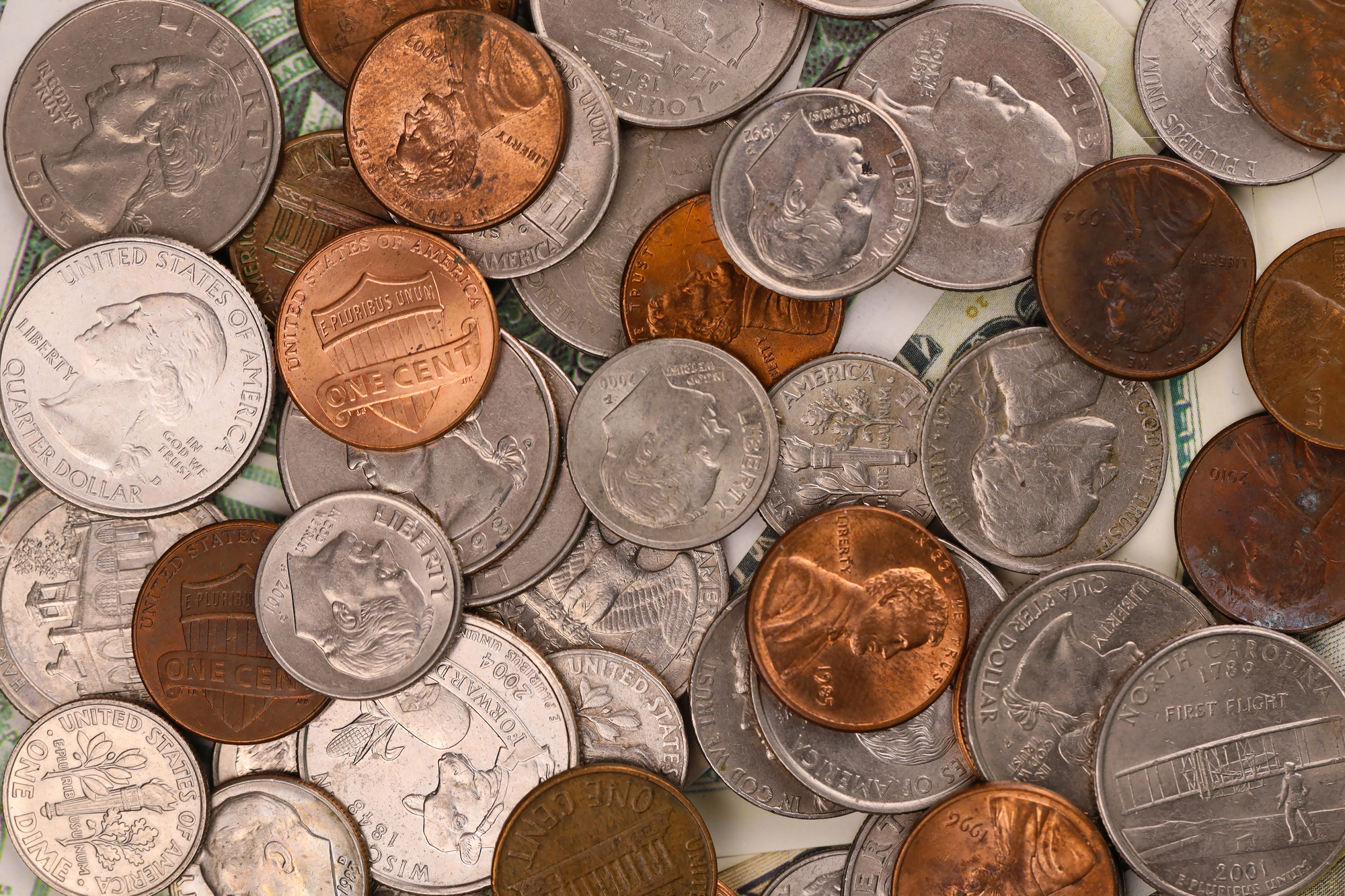
Mint marks help ensure coins are produced to the correct standards at each mint facility. Historically, a commission evaluated the metal content and quality of coins from each mint, using mint marks to track and verify compliance. Some coins with certain mint marks or minting errors are considered extremely rare.
Here’s why:
- Mintage Numbers Vary by Location – Some mints produced fewer coins, making their versions more desirable. For example, the Denver Mint is known for producing many coins, which can affect the rarity and collectibility of coins with the 'D' mint mark.
- Certain Mint Marks Are Historically Scarce – For example, coins from Carson City (“CC”) are particularly valuable due to limited production.
- Mint Marks Can Increase Value – Even modern coins with the right mint mark and condition can command premium prices.
What Coins Are Worth Money Because of Their Mint Marks?
The use of mint marks to identify coins was formalized when a congressional act established mint marks in the 19th century.
Silver coins and gold and silver coins from certain mints are especially valuable to both investors and collectors, as their mint marks, authenticity, and rarity can greatly increase their worth. The 1835 congressional act established the use of mint marks and the first branch mints, setting the stage for identifying valuable coins based on their place of origin.
Here are a few famous U.S. coins where the mint mark makes all the difference:
| Coin | Mint Mark | Estimated Value (Good Condition) |
| 1909-S VDB Lincoln Cent | S | $700+ |
| 1916-D Mercury Dime | D | $1,000+ |
| 1932-D Washington Quarter | D | $150–$300 |
| 1893-S Morgan Dollar | S | $2,000–$15,000 |
| 1878-CC Morgan Dollar | CC | $300+ |
Note: Condition and grading can significantly influence prices. Historically, the value of coins was also influenced by how commissions evaluated the metal compositions of coins from different mints.
United States coins with rare mint marks, as well as certain numismatic silver medals produced by different Mint facilities, are highly sought after by collectors for their historical significance and investment potential.
Tips for Identifying Valuable Coins
Want to know if you have a hidden gem in your collection? Here’s how to start:
- Check for rare dates and mint marks.
- Look for coins in excellent condition.
- Research recent auction prices for similar coins.
- Verify authenticity with a reputable dealer.
Tip: Circulating coins a commission evaluated for metal content and quality are more likely to be authentic and valuable, as these coins were assessed to ensure they met specific standards.
Metal compositions and quality play a crucial role in determining a coin’s value, as coins evaluated by a commission for these factors are more likely to meet historical standards and be sought after by collectors. Historically, commissions evaluated the metal compositions of coins to ensure they met required specifications, especially during periods of change in minting practices.
Beginner Collector’s Checklist:
- Look closely at the mint mark and year
- Check the coin's origin and characteristics, including its mint mark
- Look for coins made from metals such as gold and silver
- Check for low mintage years
- Research rare combinations (e.g., 1914-D penny)
- Use a magnifying glass or coin loupe
- Compare with trusted online databases or coin guides
- Avoid cleaning your coins - it may reduce their value
The U.S. Mint used silver to make circulating coins, and a commission was responsible for evaluating the metal composition and quality of these coins at different Mint facilities.
Mint Mark Authentication: How to Spot the Real Thing
For coin collectors, verifying the authenticity of a mint mark is a crucial step in evaluating a coin’s value and provenance. Mint mark authentication involves a careful examination of the coin’s physical characteristics, including its metal composition, weight, and design details. One of the most reliable ways to authenticate a mint mark is to submit the coin to a professional grading service, such as the Professional Coin Grading Service (PCGS) or the Numismatic Guaranty Corporation (NGC). These organizations employ expert numismatists and advanced technology to assess the authenticity of both the coin and its mint mark.
Collectors can also perform their own preliminary checks. A genuine mint mark should be cleanly struck, evenly spaced, and properly aligned with the rest of the coin’s design. Signs of tampering, such as uneven spacing, misalignment, or unusual wear around the mint mark, may indicate a counterfeit or altered coin. Additionally, comparing the coin’s metal composition and weight to official mint specifications can help confirm its legitimacy.
By combining professional authentication with careful personal inspection, coin collectors can confidently identify authentic mint marks and protect their investments.
Common Myths About Mint Marks
Let’s clear up some confusion:
- Myth 1: No mint mark means the coin is rare. Fact: Often, it just means it was minted in Philadelphia. The 'P' mint mark first appeared on coins during World War II, when changes in coin production were necessary due to wartime metal shortages.
- Myth 2: A worn mint mark means it’s a fake. Fact: Wear is natural; damage doesn’t always signal forgery.
- Myth 3: All coins with a “D” are valuable. Fact: Many are common unless paired with specific years or errors.
Marks in the United States have evolved over time, especially as the U.S. used precious metals like gold and silver in coin production. During World War II, coins saw changes in metal composition and the introduction of new mint marks, such as the 'P' for Philadelphia, to address metal shortages and identify coins produced during this period. The government evaluated metal compositions and used mint marks to identify coins from different U.S. Mint facilities, reflecting changes in coinage history.
Proof Coins and Mint Marks
Proof coins are a special category of coins, crafted with extraordinary care to achieve a mirror-like finish and sharp, intricate details. Unlike regular circulating coins, proof coins are struck multiple times using specially polished dies and planchets, resulting in a stunning, highly collectible product.
Mint marks play a crucial role in the world of proof coins. These small letters not only identify the mint where the coin was produced, but also serve as a key factor in determining a proof coin’s rarity and value. For example, the San Francisco Mint and Philadelphia Mint are renowned for their long history of producing proof coins with distinctive mint marks. The West Point Mint, often marked with a “W,” has become especially sought after by collectors, particularly for modern commemorative and precious metal issues.
A standout example is the 2017 American Liberty 225th Anniversary gold coin, which proudly displays the “W” mint mark from the West Point Mint. This coin, along with other special releases like the anniversary silver medal reverse, highlights how mint marks can elevate a proof coin’s desirability and collectability.
The tradition of using mint marks on coins - including proof coins - dates back to the 1835 Congressional Act, which established the practice in the United States. Since then, mint marks have been used to identify the origin of coins, helping collectors trace their history and authenticity. The Philadelphia Mint, as the nation’s oldest mint, has played a pivotal role in this tradition, producing proof coins with and without mint marks over the years.
For coin collectors, finding proof coins with specific mint marks - such as those from the San Francisco Mint, Philadelphia Mint, or West Point Mint - can be especially rewarding. Limited-edition proof coins, or those from a particular mint, often command higher prices and are highly prized additions to any collection.
The production of proof coins with mint marks requires exceptional precision and attention to detail, making them a testament to the craftsmanship of the United States Mint. Whether you’re searching for a rare American Liberty 225th Anniversary coin or a classic proof coin from the San Francisco Mint, mint marks are your guide to authenticity, quality, and value in the world of coin collecting.
Spotlight: The San Francisco Mint
The San Francisco Mint stands as a symbol of American ingenuity and resilience, with a legacy that stretches back to its founding in 1854. Established during the California Gold Rush, the San Francisco Mint quickly became a vital hub for turning newly discovered gold into coins that fueled the nation’s growth. Over the years, the mint has produced some of the most iconic coins in U.S. history, including the beloved Morgan Dollar and the modern American Eagle series.
Collectors prize the “S” mint mark, which signifies a coin’s origin at the San Francisco Mint. This mark is often associated with exceptional quality and limited mintage, making coins from this facility especially desirable. In recent years, the San Francisco Mint has continued its tradition of excellence with releases like the 2017 American Liberty 225th Anniversary Gold Coin. This special coin, featuring a bold new design and the distinctive “S” mint mark, celebrates both the mint’s heritage and its ongoing commitment to innovation.
Beyond coin production, the San Francisco Mint is also home to the San Francisco Assay Office, where precious metals are tested for purity and weight. This ensures that every coin and medal meets the highest standards of quality and authenticity. For collectors and investors alike, coins bearing the San Francisco Mint’s mark are a testament to the enduring legacy of American coinage.
How to Start Coin Collecting or Appraise Your Coins
Not sure where to start? Or maybe you’ve inherited a collection and want to know what it’s worth?
The Philadelphia Mint makes many coins and medals, and the P mint mark appeared on certain coins during key historical periods, such as World War II and the introduction of new coin series.
Copper State Coin & Bullion can help.
Why Choose Us:
- Free coin appraisals
- Buy, sell, and trade rare coins
- Expert knowledge in U.S. Mint history
Stop by our shop or contact us online to learn the story behind your coins - and possibly discover their hidden value.
Conclusion
Mint marks are more than just small letters - they’re clues to a coin’s origin, rarity, and value. Whether you’re collecting as a hobby or investing in precious metals, understanding what mint marks mean will take your knowledge (and potential profits) to the next level.
Got a coin you’re curious about? Bring it to Copper State Coin & Bullion and let our team help you uncover its history - and its worth.

